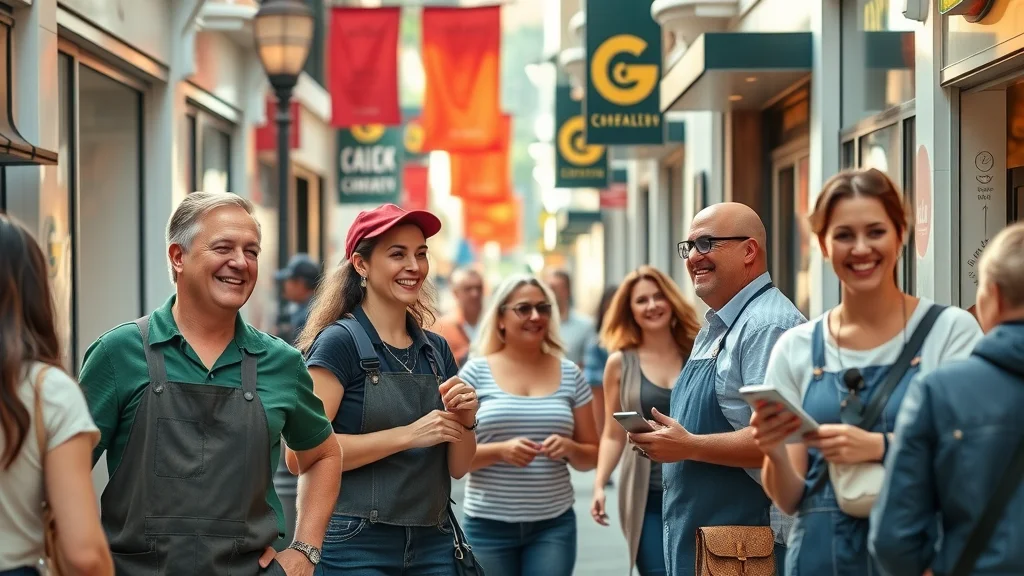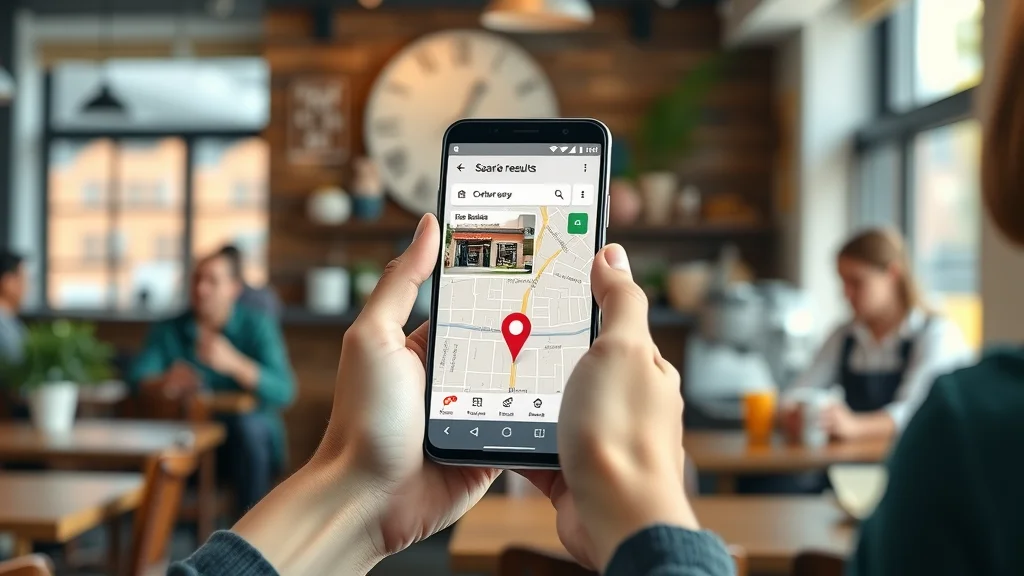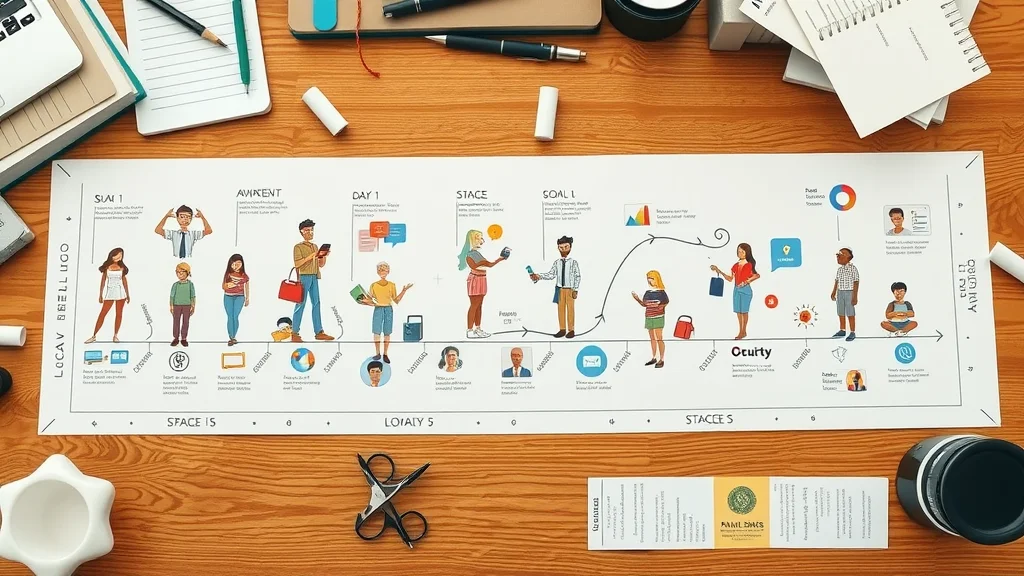Did you know? Over 90% of consumers discover local businesses through online searches before ever stepping foot inside a store. Whether you run a cosy café, a bustling boutique, or offer services in your town, local business marketing channels are the pipeline to rapid growth. If you’re not leveraging these channels—especially video-driven strategies—your small business could be invisible in your local market. This guide breaks down every major marketing channel and shows you actionable steps to outshine competitors, attract local customers, and build lasting community loyalty.

"Over 90% of consumers discover local businesses through online searches before ever stepping foot inside a store."
Breaking the Mold: Why Local Business Marketing Channels Can’t Be Ignored
Local business owners often focus so heavily on running daily operations that strategic marketing sits on the back burner. Yet, neglecting local business marketing channels means missed opportunities—not just in drawing in new customers, but in fostering strong relationships within your local community. Today’s potential customers expect businesses to be visible across platforms like social media, dominate search results, and have a strong video presence. Competing small businesses are already innovating, so a buried listing or outdated Facebook page won't suffice in the current local market.
Rapid growth is now powered by harnessing a blend of both traditional and digital marketing channels. A video shared on a popular social media platform can rocket your brand to local fame overnight, while a positive Google My Business review lands you at the top of local search results. In short, ignoring these channels means risking your local business being outpaced by more marketing-savvy competitors. Make sure you’re capitalising on every relevant channel to keep your business at the forefront of the community’s mind.
What You'll Learn About Local Business Marketing Channels
- The definition and core benefits of local business marketing channels
- Strategy selection for rapid growth in a competitive local market
- How to leverage social media and video for powerful local marketing
- Best practices for email marketing, search engine targeting, and mouth marketing
- Actionable steps to dominate your local market using multiple marketing channels
Understanding Local Business Marketing Channels
What are Business Marketing Channels?
Answer: Business marketing channels are the pathways or platforms businesses use to reach potential customers with their products or services.
Business marketing channels encompass all the methods and platforms available to connect your business to potential customers. Think of these channels as the bridges between your brand and the audiences you want to serve—ranging from online tools like social media platforms and search engines to traditional systems such as flyers, events, or even simple mouth marketing. The most effective way to capture attention is by understanding where your local audience spends time, then meeting them with authentic, relevant messages. Today, digital options like email marketing or video content provide a great way for small businesses to scale local engagement while still maintaining a personal touch.
What is Local Business Marketing?
Answer: Local business marketing is the marketing strategy focused on promoting products or services to the local audience and attracting local customers within a specific geographic area.
Local business marketing is all about putting your small business squarely in front of people who live, work, and play nearby. Unlike broad, generic campaigns, local marketing strategies are sharply focused on a defined geographic region—your local area. The aim: to convert nearby residents and passersby into loyal supporters. By leveraging tools like local social media groups, Google My Business profiles, and targeted video ads, businesses can “own” their niche in the local market. A smart local approach doesn’t just increase footfall; it transforms casual browsers into repeat buyers and enthusiastic brand advocates.
The Anatomy of a Local Market
- Size and characteristics of your local audience
- Defining the potential customer base
- Competitor presence and local marketing trends
Every local market has unique traits—demographics, spending power, core values, and lifestyle. Your first step as a small business is to define your target customer base: Who are they? Where do they gather, and what social platforms do they prefer? Analysing the competitive landscape is also crucial—what marketing channels are your competitors dominating, and where are the gaps? Understanding these elements shapes which channels—be that content marketing, email campaigns, or local event sponsorships—will strike a chord with your target audience.

| Channel Type | Reach | Cost | ROI (Return on Investment) |
|---|---|---|---|
| Physical Advertising (flyers, billboards) | Local-only | Medium-High | Low-Medium |
| Social Media Platforms | Broad & Targeted | Low-Medium | High |
| Local Search (Google My Business, Maps) | Highly Localised | Low | High |
| Email Marketing | Targeted Subscribers | Very Low | High |
| Events/Sponsorships | Hyperlocal | Medium | Medium-High |
| Video Content Creation | Viral & Local | Low-Medium | High |
The 5 Core Local Business Marketing Channels
1. Social Media as a Local Marketing Channel
- Best platforms for small businesses and local businesses
- Engaging the local community
- Promoting products or services visually
Social media remains one of the most influential and cost-efficient marketing channels for small businesses. Platforms like Facebook, Instagram, and TikTok are bursting with local audience interaction, offering real-time feedback and sharing capabilities. For many local businesses, a well-timed post or a behind-the-scenes video can humanise your brand and instantly grab attention in your local market. Utilising visually engaging content—such as staff spotlights, exclusive offers, or community highlights—allows you to build authentic connections, foster word-of-mouth, and drive traffic back to your physical or online store.
The best way to gain traction is to make sure your content feels local: include shout-outs to other local businesses, use location-based hashtags, and showcase products or services in recognisable neighbourhood settings. Platforms like Instagram Reels and Facebook Stories enable you to post quick, engaging videos that boost discoverability both organically and through paid ads. Ultimately, consistent, authentic interaction on social media will help your business cement its presence in the local community—and can even quickly multiply your customer base through viral sharing.

Watch: How Local Businesses Grow Using Social Media Marketing Channels
2. Search Engine Marketing and Local Search Results
- Getting found in local search results
- Optimising for search engine algorithms
- Google My Business & map listings for local customers
Search engine marketing is vital for businesses aiming to appear in top local search results. With platforms like Google My Business and Bing Places, your local business can be discovered easily by potential customers searching for products or services nearby. Optimising your business listing—adding photos, updating business hours and gathering reviews—signals relevance and trust to both customers and algorithms. This visibility is especially critical as more consumers rely on maps and search engines to find the best way to fill their local needs.
To maximise your reach, include keywords relevant to your local market within your descriptions and posts (like using “[Your Service] in [Your Town/City]”). Pursuing local SEO initiatives—such as encouraging customer reviews, embedding a map on your website, and maintaining consistent business information across platforms—positions you to rank higher in search results. Google My Business also allows for the publication of posts, images, and special offers, which further engage the target local audience where they’re already searching.

3. Email Marketing Strategy for Small Businesses
- Building and segmenting your local email list
- Automating for maximum local market impact
- Crafting irresistible offers for local audiences
Email marketing is an often overlooked—but extremely powerful—marketing channel for small businesses. Building a rich, segmented email list allows direct communication with your most interested local customers. By segmenting your contacts (for instance, by neighbourhood or purchasing habits), you can send targeted offers and updates that resonate with recipients. Automation tools make it simple to deliver welcome messages, nurture local leads, or remind customers of upcoming events or exclusive deals.
The great way to drive action is by consistently delivering value: special offers, local news, behind-the-scenes stories, or invitations to community events. Email marketing platforms like Mailchimp, Constant Contact, or HubSpot provide accessible templates and tracking analytics, optimising both reach and engagement. Make sure to encourage sign-ups in-store with QR codes or at community events to expand your list. Sharp, focused email campaigns nurture loyalty—and when paired with powerful video and testimonial content, help transform one-off buyers into devoted advocates.

4. The Power of Mouth Marketing in Your Local Community
- Referrals and word-of-mouth marketing
- Building trust with the local community
- Leveraging testimonials in marketing strategies
Despite the digital world’s growing dominance, nothing beats personal recommendations—mouth marketing (or word-of-mouth) is still one of the most effective ways to turn local prospects into loyal brand advocates. A customer’s sincere testimonial, whether in a social post, a Google review, or a casual conversation, naturally inspires trust and brings in new local customers. Businesses can leverage this by actively collecting, showcasing, and incentivising testimonials both online and offline.
Small businesses thrive when they establish a reputation for reliability and friendliness in their local area. Consider implementing a referral programme—offering discounts or rewards encourages existing customers to share your business with their neighbours and network. Featuring regular customer spotlights (especially via short, shareable video testimonials) on your social media channels and website can amplify organic reach and embed your business into the fabric of your local community.

5. Content Creation: Blogging & Video to Dominate Marketing Channels
- Blog posts that address local business needs
- Video content: Why it’s vital for local marketing
- Platforms like YouTube and Instagram Reels for local audience reach
Creating insightful blog posts and compelling video content positions your business as an authority in the local market. A regular blog post—perhaps a feature on “Best Ways to Experience [Your Town]”—addresses the unique needs and interests of your community, naturally boosting search engine rankings. Even more impactful, video content (like quick product demos or ‘meet the owner’ clips) delivers authenticity and connection. Local audiences respond strongly to seeing real faces and stories, making video a great way to engage and build trust.
Platforms like YouTube and Instagram Reels give small businesses a direct route to local visibility. Short, informative videos resonate as people prefer learning about products or services visually. Regular content creation also feeds back into other marketing channels—supporting your social media, email marketing, and even SEO strategies. The evidence is clear: if you want to dominate, make sure to consistently publish both written and video content tailored for your community.
Watch: Success Stories: Video Marketing in Local Businesses
Expanding to the 7 Categories of Local Business Marketing Channels
- Social media
- Email marketing
- Search engine optimization and search engine marketing
- Physical advertising (flyers, billboards)
- Events and sponsorships in the local community
- Mouth marketing strategies
- Content/video marketing
"Integrating multiple marketing channels guarantees your small business stands out in a crowded local market." — Local Marketing Expert
Choosing the Best Local Marketing Strategy for Your Small Business
Differences Between Marketing Channels and Their Impact
- Cost vs. Return: Assessing each marketing channel
- Audience fit: Match channel to your local customers
- Longevity: Which channels sustain growth?
Each marketing channel comes with unique strengths—and it’s critical you weigh cost, return, and fit for your local audience. Social media may offer the fastest direct response, while video creation can have lasting resonance and recall. Email marketing is highly cost-effective for targeted offers, whereas event sponsorships build strong in-person relationships. Matching these channels to your business’s unique personality, local market habits, and growth ambitions ensures your efforts deliver maximum ROI for sustained success.
Take the time to evaluate which platforms your local customers use most, and test multiple approaches—the best way to find what works is through ongoing experimentation and refinement. Cost-effective options (like organic social, email, and video content) often outperform higher-cost advertising when paired with a focus on local values and experiences. Combine quick-hitting campaigns (e.g., flash sales via social or email) with longer-term plays (such as blog series and evergreen community videos) for balanced, ongoing market penetration.
| Channel | Engagement | Leads | Conversion |
|---|---|---|---|
| Social Media | Likes, shares, comments | Followers, DMs | Promo code redemptions, bookings |
| Email Marketing | Open/click rates | Signups via forms | Purchases from links |
| Local Search | Business profile views | Calls, direction requests | In-store visits |
| Video Content | Video views, shares | Comments, subscriptions | Product/service inquiries |
| Mouth Marketing | Mentions, recommendations | Referrals | Repeat purchases |
How to Make Sure Your Marketing Channel Mix Reaches The Potential Customer
- Map customer journey and pinpoint core touchpoints
- Ensure consistent presence across multiple channels
- Focus on platforms like social media and search engines
To guarantee your message resonates with the potential customer, first map out their journey—from initial discovery to repeat purchasing. Identify when and where your audience interacts most with your local business: is it through Google search, Instagram stories, or word-of-mouth at community events? Once mapped, maintain consistent messaging, branding, and engagement across all relevant marketing channels. Cross-post content, retarget ads, and always keep your details (hours, offers) up-to-date on each platform. Concentrate efforts on your top-performing channels, but don’t ignore offline interactions which could drive online conversions.
Platforms like Facebook, Google, and YouTube are especially powerful for local discovery. Track performance data closely and be flexible—pivot your focus if one channel dramatically outperforms another. Ultimately, businesses that meet customers wherever they’re most comfortable—online, in email, or right in the community—see the fastest path to local market leadership.

Optimizing Video Content as a Local Marketing Channel
Why Video is Essential for Small Business Success in Local Marketing
- Higher engagement rates from local audiences
- Storytelling for local community connection
- Rapid sharing across platforms
Video has become an indispensable part of successful local business marketing channels. With most consumers preferring to absorb information visually, video content can tell your local business story quickly, authentically, and memorably. Video is remarkably effective for showing what makes your products or services unique—and for introducing the personalities who power your business. Local audiences are far more likely to remember, share, and trust a business after watching a sincere video than after seeing a static ad or reading text.
Story-driven videos also encourage participation and pride within the local community: showcasing customer testimonials, behind-the-scenes clips, or footage from sponsored events. Because platforms like YouTube, Facebook, and Instagram prioritise video in their algorithms, regularly published videos can substantially boost organic reach. This is the era of “show, don’t just tell”—so businesses that embrace consistent, creative video marketing see exponential improvements in engagement and conversion.

Watch: Step-by-Step: Creating Effective Video Content for Local Businesses
Coordination Across Marketing Channels: Creating a Unified Local Marketing Strategy
Leveraging Social Media, Email Marketing & Local Search Together
- Cross-promotions for products or services
- Using data from one marketing channel to optimise another
- Automating responses for better local customer service
No single marketing channel operates in isolation. Small businesses see the most rapid growth when they integrate social media, email marketing, and local search initiatives. Cross-promote exclusive offers and events: tease a flash sale on Instagram Stories, drive newsletter sign-ups on Facebook, and remind email subscribers to post Google reviews. Data collected from one channel (e.g., which social posts drive email signups) can optimise your strategy across the board. Automation tools allow for instant replies and personalised messages, keeping your communications timely without losing a local, personal touch.
Unified campaigns also strengthen your brand’s voice and identity in the local market. By maintaining a seamless dialogue—no matter where your potential customers engage—you avoid duplication of effort, amplify results, and deliver a far more memorable experience. Ultimately, the best way forward is cross-channel marketing: each touchpoint reinforcing the others while guiding the local customer down the funnel from awareness to advocacy.
Maximizing Customer Engagement in the Local Market
Personalising Your Marketing Channels for Local Customers
- Tailoring offers based on local market insights
- Building loyalty programs engaging local customers
- Highlighting local community initiatives
Engaging your local customers demands more than generic outreach—it’s achieved by personalisation. Use insights from your local market to segment email lists, target social ads, or craft video content around community values and needs. Exclusive offers, loyalty programs, and rewards for repeat visits create a sense of belonging while driving retention. Your role extends beyond business—you become a true community partner.
Make sure to highlight customer stories, partnering with other small businesses, or sponsoring local charity events. These efforts, showcased across marketing channels, position your business as invested in the success of your community, not just your own. The result? Customers who feel valued, contribute to your growth, and become advocates for your brand.

"Potential customers always remember the business that made them feel like a neighbour, not a number."
Common Mistakes Small Businesses Make in Local Marketing Channels
- Ignoring video and visual content across marketing channels
- Failing to track channel effectiveness in the local market
- Overlooking the need for a unified marketing strategy
Many small businesses fall into the trap of “set it and forget it.” Neglecting regular video creation, failing to update or monitor performance, and running siloed campaigns are all too common pitfalls. Make sure to measure what matters: track performance for every channel, from video views to email open rates to local search listings, and adjust accordingly. Overlooking integration causes lost opportunities—as cross-promotion delivers compounding effects. Dedicate time each week to refining your unified local marketing strategy so your business doesn’t lag behind in the local market.
Always prioritise learning and adaptability. Encourage staff and loyal customers to share feedback on your communications, and never underestimate the power of compelling, locally-focused video content to lift your brand above the competition.

People Also Ask About Local Business Marketing Channels
What are business marketing channels?
Answer: Business marketing channels are the systems and platforms brands use to communicate and deliver products or services to potential customers, whether digitally or via traditional methods.
What is local business marketing?
Answer: Local business marketing refers to targeted strategies tailored to connect with individuals in a defined geographic region, turning local customers into loyal supporters.
What are the five marketing channels?
Answer: The five most effective marketing channels for small businesses are social media, search engine marketing, email marketing, mouth marketing (word-of-mouth), and content/video marketing.
What are the 7 categories of marketing?
Answer: The seven categories include social media, email marketing, search engine optimisation and marketing, physical advertising, events/sponsorships, word-of-mouth marketing, and content/video marketing.
Actionable Tips: Lists for Local Business Marketing Channel Mastery
- Prioritise affordable, high-impact channels for your local audience
- Incorporate video into at least one marketing channel
- Cross-promote across platforms like social media and email
- Continually analyse metrics to optimise your marketing strategy
- Engage actively with your local community both online and offline

Frequently Asked Questions on Local Business Marketing Channels
Which marketing channel works best for rapidly growing a local business?
The best way to grow a local business rapidly is to combine video-driven social media engagement with robust local search optimisation. Consistent video updates on platforms like Instagram, Facebook, and YouTube increase your visibility, while an optimised Google My Business profile makes sure you show up in local search results precisely when potential customers are looking. Supplement with targeted email marketing for maximum retention and conversion.
How do I reach more local customers using marketing channels?
To reach more local customers, focus on multi-channel touchpoints: publish video and visual content regularly on your most popular social media platforms, update your local search profiles, and nurture your email list with tailored offers. Participate in local events and partner with other businesses in your area for mutual promotion. Always keep your messaging community-centric.
Should a local business always use video in its marketing strategy?
Yes—video content drives higher engagement and helps local customers connect with your business on a personal level. Videos showcasing your team, featuring testimonials, or highlighting community events are not only memorable but also much more likely to be shared, amplifying reach and trust in your local market.
What are the most cost-effective local business marketing channels for small businesses?
Social media, email marketing, and word-of-mouth (mouth marketing) are the most cost-effective marketing channels for small businesses. These methods require low upfront investment, are highly scalable, and, with engaging content—especially video—can deliver impressive returns.
How can small businesses measure the effectiveness of their marketing channels?
Utilise built-in analytics tools offered by social media platforms, email providers, and Google My Business to track engagement rates, leads, and conversions. Regular analysis of these key metrics allows you to refine your strategy and ensure you’re investing resources for the greatest local market impact.
Key Takeaways: Unleashing Growth Through Integrated Local Business Marketing Channels
- Combination is key: Integrate multiple marketing channels for maximum local impact
- Video content drastically enhances reach in local marketing
- Regularly review and optimise for your local market’s evolving needs
- Ongoing community engagement amplifies word-of-mouth marketing
 Add Row
Add Row  Add
Add 










Write A Comment